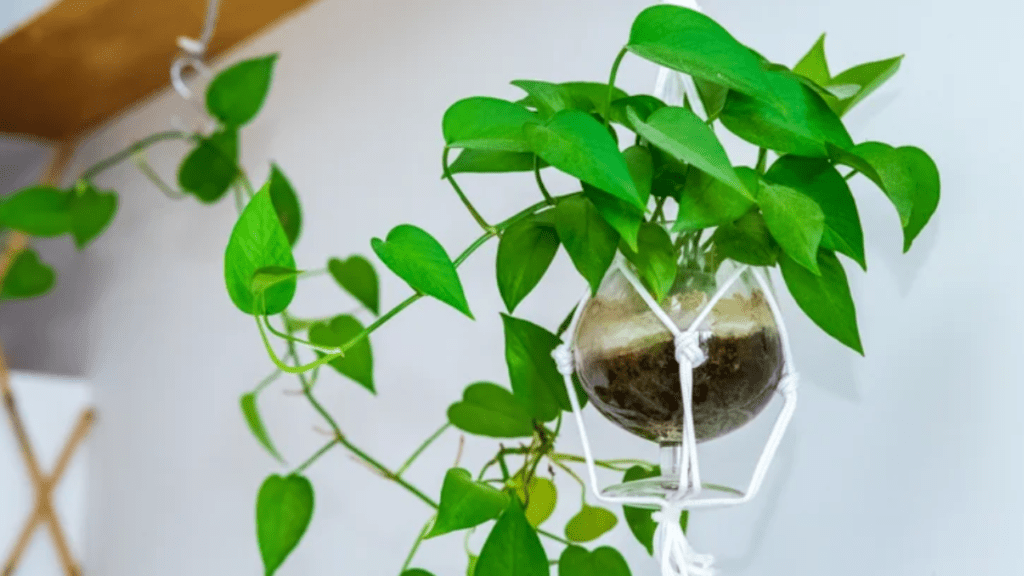
How to Care for Vining House Plants: A Complete Guide
Vining house plants can add a beautiful and lush touch to any indoor space, but they do require some specific care in order to thrive. In this complete guide, we’ll cover everything you need to know about caring for vining house plants, including watering schedules, sunlight requirements, pruning techniques, and even how to propagate new plants from your existing ones. Whether you’re a seasoned plant parent or just starting out, this guide will provide you with the information you need to keep your vining house plants healthy and thriving.
When it comes to caring for vining house plants, there are a few key things to keep in mind. First, make sure to water your plants regularly, but be careful not to overwater them as this can lead to root rot. It’s important to check the soil moisture level before watering to ensure that the plant is getting the right amount of water. In terms of sunlight, most vining house plants thrive in bright, indirect light, so be sure to place them in a location where they can get plenty of natural light without being directly exposed to harsh sunlight. Pruning is also an important aspect of caring for vining house plants, as it helps to keep them healthy and promote new growth. Finally, if you want to expand your collection of vining house plants, you can learn how to propagate new plants from your existing ones. With the right care and attention, vining house plants can bring natural beauty and a touch of greenery to any indoor space.
Table of Contents
ToggleBenefits of Vining House Plants
Improved Air Quality: Discuss how vining plants can help purify indoor air.
Vining plants can help improve indoor air quality by removing toxins and pollutants from the air. They do this through a process called phytoremediation, where the plants absorb and break down harmful compounds from the air. This can help to create a healthier living environment and reduce the risk of indoor air pollution. In addition, vining plants can also help to increase humidity levels in the air, which can be beneficial for respiratory health. Overall, having vining plants in your home can contribute to a cleaner and more pleasant indoor atmosphere.
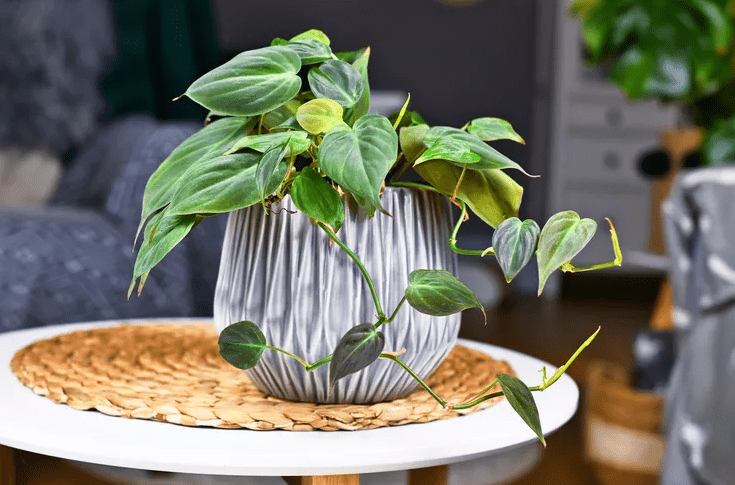
Aesthetic Appeal: Explain the visual impact and decorative advantages of vining house plants.
Vining house plants can add a beautiful visual appeal to any indoor space. The lush, trailing vines can create a sense of natural beauty and bring a touch of greenery to liven up the decor. These plants can be used to fill empty spaces, add texture, and create a welcoming and cozy atmosphere. They can be trained to climb up trellises or along shelves, adding an elegant and decorative touch to any room. In addition, vining house plants come in a variety of shapes, sizes, and colors, allowing for endless possibilities in terms of visual impact and decorative advantages. Whether you prefer a classic English ivy or a vibrant pothos, vining house plants can enhance the aesthetic appeal of any indoor space. Overall, these plants can bring a sense of natural beauty and visual interest to your home, making them a valuable addition to any interior design scheme.
Space Efficiency: Highlight how these plants can grow vertically, making them ideal for small spaces.
Vining house plants are a great choice for small spaces as they have the ability to grow vertically, making them perfect for areas with limited floor space. By training these plants to climb up trellises or along shelves, you can make use of vertical space and create a lush, green display without taking up valuable floor space. This makes them ideal for apartments, offices, or any room where space is at a premium. Additionally, vining house plants can add a sense of height and depth to a room, making it feel larger and more open. Their ability to grow vertically also allows for creative and versatile placement, as they can be placed on bookshelves, hung from the ceiling, or trained along a wall to create a stunning visual display. Overall, vining house plants are an excellent choice for adding greenery to small spaces while maximizing space efficiency.
Top 10 Vining House Plants
Pothos (Epipremnum aureum)
Pothos is a great choice for small spaces due to its space efficiency. These plants have the ability to grow vertically, making them perfect for areas with limited floor space. By training them to climb up trellises or along shelves, you can make use of vertical space and create a lush, green display without taking up valuable floor space. This makes them ideal for apartments, offices, or any room where space is at a premium. Additionally, vining house plants can add a sense of height and depth to a room, making it feel larger and more open. Their ability to grow vertically also allows for creative and versatile placement, as they can be placed on bookshelves, hung from the ceiling, or trained along a wall to create a stunning visual display. Overall, vining house plants like Pothos are an excellent choice for adding greenery to small spaces while maximizing space efficiency.
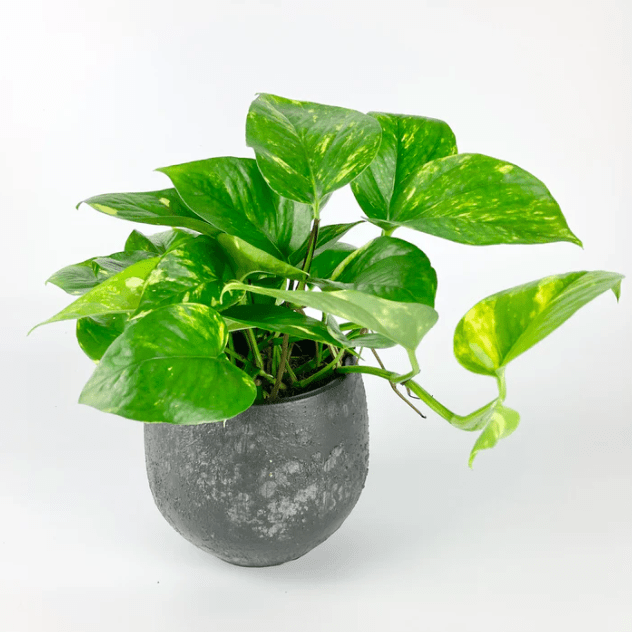
Heartleaf Philodendron (Philodendron hederaceum)
Heartleaf Philodendron is a popular vining house plant known for its heart-shaped leaves and easy-care nature. This plant is a great choice for beginners as it is low-maintenance and can tolerate a variety of light conditions, making it versatile for different areas of your home. Its vining nature makes it perfect for hanging baskets or trailing along a shelf, adding a touch of greenery to your space. The Heartleaf Philodendron is also known for its air-purifying properties, making it a great choice for improving indoor air quality. With proper care, this vining house plant can grow long, lush vines, creating a beautiful and natural display in your home. Overall, the Heartleaf Philodendron is a top choice for vining house plants due to its beautiful foliage, easy care, and air-purifying benefits.
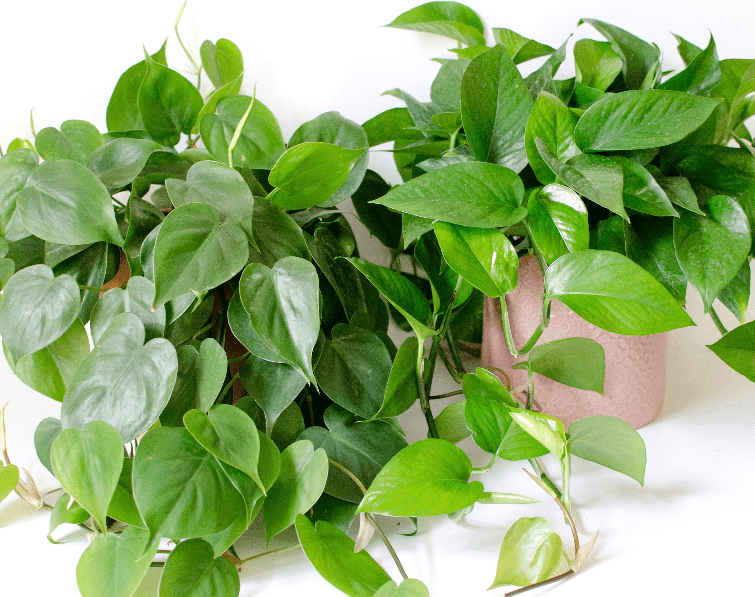
English Ivy (Hedera helix)
English Ivy is a classic vining house plant that is known for its elegant, trailing foliage. It is a versatile plant that can be grown indoors or outdoors, making it a popular choice for adding greenery to your space. English Ivy is also known for its air-purifying properties, making it a great choice for improving indoor air quality. This vining house plant can be trained to climb or allowed to trail, making it a versatile choice for different areas of your home. It is important to note that English Ivy can be toxic to pets, so it should be kept out of reach of animals. With the proper care and maintenance, English Ivy can create a lush and green display in your home. Overall, English Ivy is a beautiful and classic choice for vining house plants, adding a touch of elegance and greenery to your space.
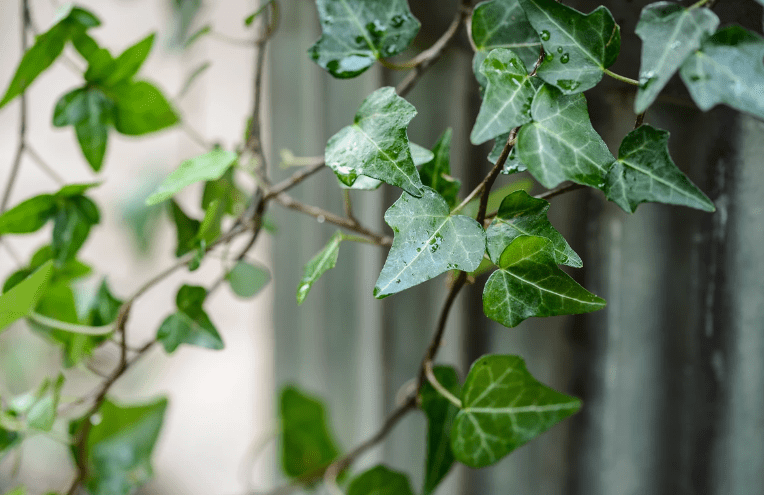
String of Pearls (Senecio rowleyanus)
String of Pearls is a unique and eye-catching vining house plant that is known for its spherical, bead-like leaves. This plant is an excellent choice for those looking to add a touch of whimsy and charm to their indoor space. String of Pearls is a low-maintenance plant that thrives in bright, indirect light and well-draining soil. It is a great choice for hanging baskets or as a trailing plant on a shelf or windowsill. String of Pearls is a drought-tolerant plant and only needs to be watered when the soil is completely dry. This makes it a great option for those who may forget to water their plants regularly. With its unique appearance and easy care requirements, String of Pearls is a great addition to any indoor plant collection. Whether you’re a seasoned plant parent or a beginner, this vining house plant is sure to bring a touch of joy and whimsy to your home.
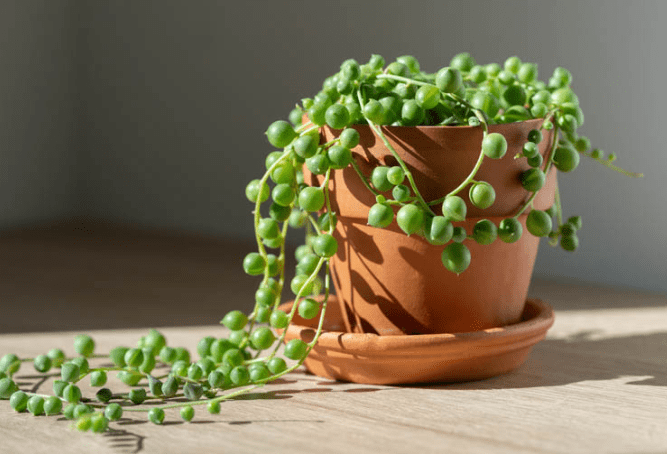
Creeping Fig (Ficus pumila)
Creeping Fig is a versatile and unique plant that adds a touch of whimsy and charm to any indoor space. With its trailing vines and small, heart-shaped leaves, it is a visually appealing option for those looking to liven up their home decor. This plant thrives in bright, indirect light and well-draining soil, making it an easy addition to any room. It is a low-maintenance plant that only needs to be watered when the soil is completely dry, making it a great option for those who may forget to water their plants regularly. Creeping Fig is also a great choice for hanging baskets or as a trailing plant on a shelf or windowsill. Its drought-tolerant nature makes it a resilient and easy-care option for both seasoned plant parents and beginners. With its unique appearance and easy care requirements, Creeping Fig is a great addition to any indoor plant collection, bringing a touch of joy and whimsy to any space.
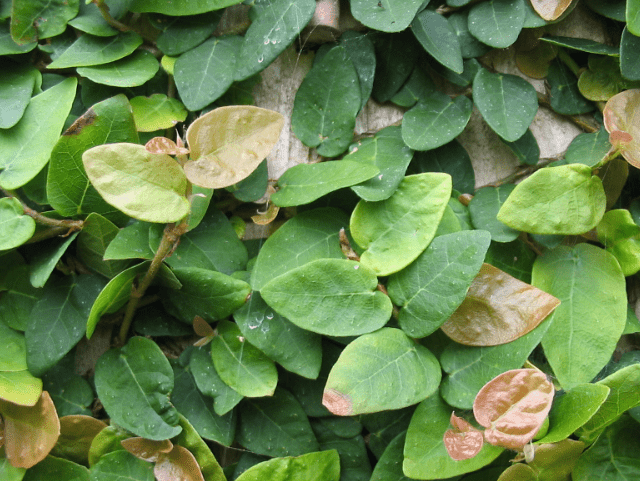
Swedish Ivy (Plectranthus verticillatus)
Swedish Ivy is a popular houseplant known for its trailing vines and lush green foliage. This plant is easy to care for and can thrive in a variety of indoor conditions, making it a great choice for beginner plant enthusiasts. Swedish Ivy prefers bright, indirect light and well-draining soil, and it should be watered when the top inch of soil is dry. With proper care, Swedish Ivy can grow into a full, bushy plant that adds a touch of greenery to any room. It is also known for its air-purifying qualities, making it a beneficial addition to indoor spaces. Whether grown in a hanging basket or as a trailing plant on a shelf, Swedish Ivy adds a touch of natural beauty to any environment. With its low-maintenance care requirements and attractive appearance, Swedish Ivy is a versatile and popular choice for indoor plant enthusiasts.
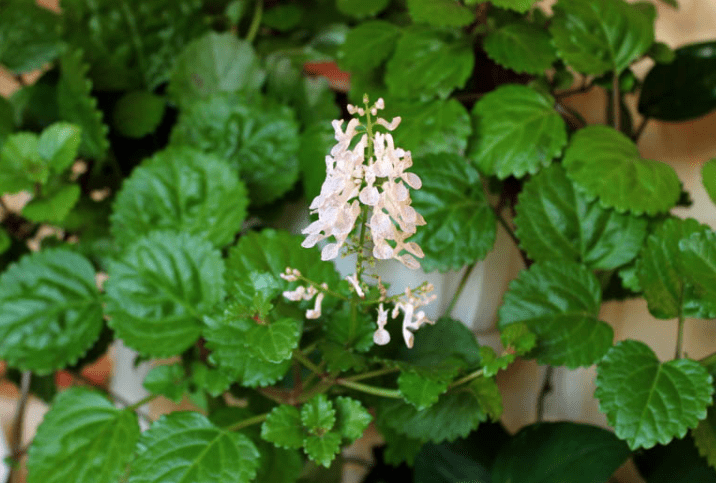
Hoya (Hoya carnosa)
Hoya is a popular houseplant known for its waxy, star-shaped flowers and trailing vines. This plant is relatively low-maintenance and can thrive in a variety of indoor conditions, making it a great choice for those new to plant care. Hoya prefers bright, indirect light and well-draining soil, and it should be watered when the top inch of soil is dry. With the right care, Hoya can bloom with beautiful, fragrant flowers that add a lovely touch to any indoor space. It is also known for its air-purifying qualities, making it a beneficial addition to indoor environments. Whether grown in a hanging basket or as a trailing plant on a shelf, Hoya adds a touch of natural beauty to any room. With its unique flowers and easy care requirements, Hoya is a beloved choice for indoor plant enthusiasts.
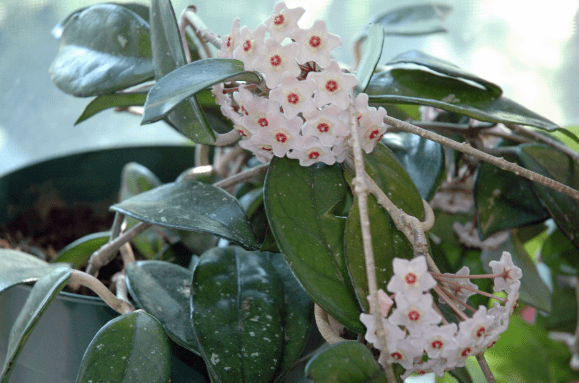
String of Hearts (Ceropegia woodii)
String of Hearts is a unique and beautiful houseplant known for its long, trailing vines with heart-shaped leaves. This plant is perfect for hanging baskets or for trailing down shelves or tables. String of Hearts is relatively low-maintenance and can thrive in a variety of indoor conditions, making it a great choice for those new to plant care. It prefers bright, indirect light and well-draining soil, and should be watered when the top inch of soil is dry. With the right care, String of Hearts can grow long, cascading vines and even produce small, tubular flowers in the right conditions. This plant adds a lovely touch of greenery and whimsy to any indoor space and is sure to be a conversation starter with its unique appearance. Whether displayed in a hanging basket or on a high shelf, String of Hearts is a charming and delightful addition to any indoor plant collection. With its distinctive appearance and easy care requirements, String of Hearts is a beloved choice for plant enthusiasts looking to add a touch of whimsy to their home.
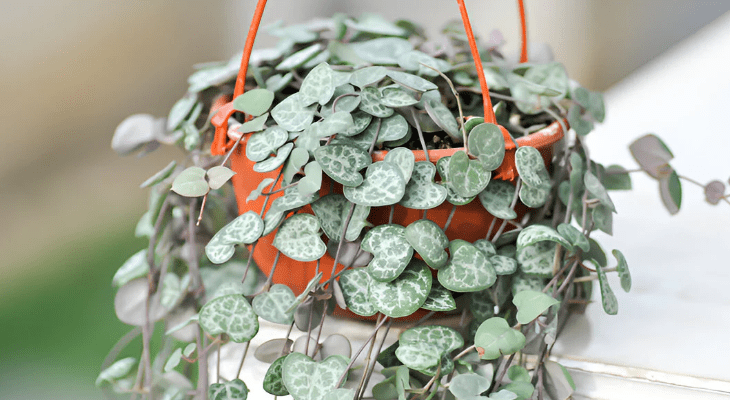
Jasmine (Jasminum spp.)
Jasmine plants, also known as Jasminum spp., are perfect for hanging baskets or for trailing down shelves or tables. They are relatively low-maintenance and can thrive in a variety of indoor conditions, making them a great choice for those new to plant care. Jasmine plants prefer bright, indirect light and well-draining soil, and should be watered when the top inch of soil is dry. With the right care, Jasmine plants can grow long, cascading vines and even produce small, tubular flowers in the right conditions. This plant adds a lovely touch of greenery and whimsy to any indoor space and is sure to be a conversation starter with its unique appearance. Whether displayed in a hanging basket or on a high shelf, Jasmine plants are a charming and delightful addition to any indoor plant collection. With their distinctive appearance and easy care requirements, Jasmine plants are a beloved choice for plant enthusiasts looking to add a touch of whimsy to their home.
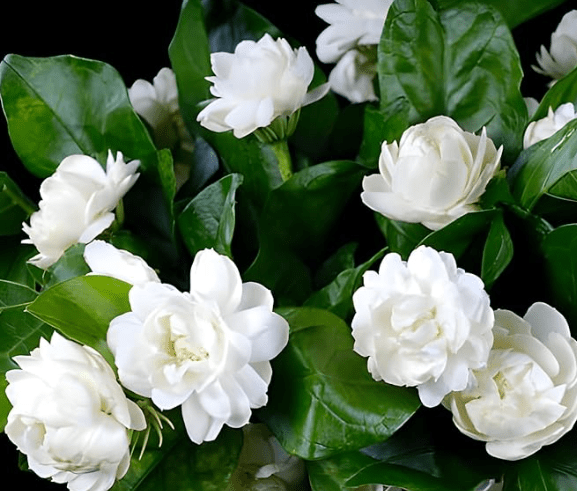
How to Care for Vining House Plants
Light Requirements: Optimal lighting conditions for different vining plants.
When it comes to caring for vining plants, it’s important to consider their specific light requirements. Different vining plants have varying needs when it comes to light, and it’s important to provide them with the optimal conditions to ensure their health and growth.
For example, Jasmine plants (Jasminum spp.) prefer bright, indirect light. They thrive in well-draining soil and should be watered when the top inch of soil is dry. With the right care, Jasmine plants can grow long, cascading vines and even produce small, tubular flowers in the right conditions.
On the other hand, Arrowhead plants (Syngonium podophyllum) also have specific light requirements. They do well in bright, indirect light but can also tolerate lower light levels. It’s important to avoid direct sunlight, as this can scorch their leaves.
Overall, it’s important to research the specific light requirements for the vining plants you have in order to provide them with the best growing conditions. By doing so, you can ensure that your vining plants thrive and add a touch of greenery and beauty to your indoor space.
Watering Guidelines: Proper watering techniques and frequency.
Proper watering techniques and frequency are essential for the health and growth of vining plants like Jasmine and Arrowhead plants. It’s important to water them when the top inch of soil is dry to the touch. Over-watering can lead to root rot, while under-watering can cause the plant to wilt and become stressed. It’s important to maintain a consistent watering schedule to keep the soil moist but not waterlogged. It’s best to water in the morning to allow the plants to dry out during the day, reducing the risk of fungal diseases. Additionally, using a watering can with a narrow spout can help you water the soil directly without getting the foliage wet, which can also reduce the risk of disease. It’s important to research the specific watering needs of your vining plants to ensure that they receive the proper care and thrive in their indoor environment.
Soil and Fertilization: Best soil types and fertilizing schedules.
When it comes to soil and fertilization for vining plants like Jasmine and Arrowhead plants, it’s important to choose the right soil type and establish a fertilizing schedule. These plants thrive in well-draining soil that is rich in organic matter. A good potting mix for these plants should include a mix of peat moss, perlite, and compost to ensure proper drainage and nutrient availability. When it comes to fertilization, it’s best to use a balanced, water-soluble fertilizer diluted to half strength every 4-6 weeks during the growing season. It’s important to avoid over-fertilization, as this can lead to salt buildup in the soil and damage the roots of the plants. Additionally, it’s important to take into account the specific needs of each plant and adjust the fertilizing schedule accordingly. By choosing the right soil and establishing a proper fertilizing schedule, you can ensure the health and vitality of your vining plants.
Decorating with Vining House Plants
Indoor Trellises and Supports: Using trellises and supports to enhance plant growth and aesthetics.
When it comes to indoor trellises and supports for vining plants, it’s important to choose the right type of support to enhance the growth and aesthetics of your plants. Trellises and supports can help vining plants grow vertically and create a beautiful, lush display in your home. There are various types of trellises and supports available, such as stakes, trellis panels, and decorative frames, that can be used to guide the growth of vining plants. It’s important to choose a support that is sturdy and can provide adequate support for the weight of the plants as they grow. Additionally, consider the aesthetic appeal of the trellis or support and how it will complement the overall look of your indoor space. By using trellises and supports, you can enhance the growth and beauty of your vining plants while also adding a decorative element to your indoor space.
Hanging Planters: Creative ways to use hanging planters for vining plants.
Hanging planters are a creative and beautiful way to showcase vining plants in your home. Using hanging planters can add a unique and decorative touch to your indoor space. You can hang them from the ceiling, on walls, or even from a sturdy shelf. This allows you to take advantage of vertical space and create a visually stunning display. When choosing hanging planters for vining plants, it’s important to consider the size and weight of the plant as well as the style of the planter. Make sure the planter is strong and sturdy enough to support the weight of the vining plant as it grows. You can also get creative with the placement of hanging planters and use them to create a natural room divider or focal point in your home. Additionally, hanging planters can be a practical solution for homes with limited floor space, as they can be hung in areas that may not be suitable for traditional potted plants. Overall, hanging planters provide a unique and visually appealing way to showcase vining plants in your home.
Shelves and Ledges: Utilizing shelves and ledges to display vining house plants.
Utilizing shelves and ledges to display vining house plants is a great way to add greenery and texture to your space. You can hang them from the ceiling, on walls, or even from a sturdy shelf. This allows you to take advantage of vertical space and create a visually stunning display. When choosing hanging planters for vining plants, it’s important to consider the size and weight of the plant as well as the style of the planter. Make sure the planter is strong and sturdy enough to support the weight of the vining plant as it grows. You can also get creative with the placement of hanging planters and use them to create a natural room divider or focal point in your home. Additionally, hanging planters can be a practical solution for homes with limited floor space, as they can be hung in areas that may not be suitable for traditional potted plants. Overall, hanging planters provide a unique and visually appealing way to showcase vining plants in your home.
Combining with Other Plants: Ideas for creating plant groupings and arrangements.
Creating plant groupings and arrangements can add visual interest and beauty to your indoor or outdoor space. One idea for creating plant groupings is to combine different types of plants to create contrast in color, texture, and height. For example, you could combine tall, spiky plants with low, trailing plants for a dynamic and visually appealing arrangement. Another idea is to use a variety of planters or containers to create a diverse and interesting display. You can mix and match different styles, sizes, and materials to create a unique and eclectic look. In addition, consider the location and light conditions when creating plant groupings. Some plants may require more sunlight, while others may thrive in lower light conditions. By combining plants with similar light and water requirements, you can create a cohesive and easy-to-maintain plant grouping. Overall, the possibilities for creating plant groupings and arrangements are endless, and with a little creativity and planning, you can create a stunning and unique display of plants in your home or garden.
In conclusion, caring for vining house plants requires attention to detail and regular maintenance. Proper watering, adequate sunlight, and regular pruning are essential for the health and growth of these plants. Additionally, learning how to propagate vining house plants can help expand your collection and create a thriving indoor garden. By following the tips and techniques outlined in this guide, you can ensure that your vining house plants thrive and bring beauty to your home.
Frequently asked questions And Answer
Vining house plants typically need to be watered when the top inch of soil feels dry to the touch. This can vary depending on the specific plant and the environment it’s in, so it’s important to monitor the soil moisture regularly.
Most vining house plants thrive in bright, indirect light. Some can tolerate lower light conditions, but they may not grow as vigorously or produce as many flowers.
Trimming vining house plants can help promote bushier growth and prevent them from becoming too leggy. It’s a good idea to regularly prune and trim your plants to keep them looking their best.
Many vining house plants benefit from some form of support to help them climb and grow. You can use stakes, trellises, or even moss poles to provide support for your plants.
Vining house plants generally prefer well-draining, nutrient-rich soil. A mix designed for indoor plants or a combination of potting soil, perlite, and peat moss can work well for vining plants.
Yes, many vining house plants can be easily propagated through methods such as stem cuttings or division. This can be a great way to expand your plant collection or share with friends.
Vining house plants can be susceptible to pests like spider mites, mealybugs, and scale insects. They can also be prone to issues like root rot if overwatered or fungal infections in humid conditions.
During the winter, vining house plants may require less frequent watering and may benefit from a slight decrease in temperature. It’s important to adjust your care routine based on the specific needs of your plants and the conditions in your home.
